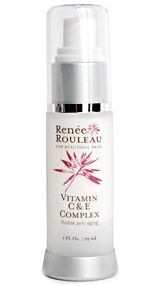
What is a chemical peel?
A chemical peel involves applying a chemical solution (acid) to skin of the face to remove and exfoliate the outer layers of skin so that a clearer, more evenly pigmented, glowing layer of skin can appear. The new, regenerated skin is usually smoother, smaller-pored and less wrinkled than the old skin. Depending on the type of peel, they are often repeated every 2-8 weeks to achieve the desired results.
What are the different types of peels?
Light peels:
Often called “lunch-time peels,” Alpha-hydroxy acids (AHA’s such as glycolic), Beta Hydroxy acids (BHA’s such as lactic) in 10%-30% formulas, enzymes and Vitamin C peels provide smoother, brighter-looking skin for people who can’t spare the time to recover from deeper peels. They are commonly used in conjunction with a facial.
Medium peels:
Often called “weekend peels,” TCA (trichloroacetic acid), 30%-70% glycolic peels and Vitamin A peels provide a deeper and more aggressive peeling. Some people will take a few days off from life/work to let the skin heal.
Deep peels:
Phenol peels are the strongest of the chemical solutions and can cause a second-degree burn of the skin giving the skin long-lasting and a dramatic result in the reduction of facial wrinkles and acne scarring. Recovery may be slow and complete healing of the skin may take 1-2 months. (Jump for more!)
How do I care for my skin after a chemical peel?
So you’ve just had a chemical peel and now you’re left with dry, irritated, peeling skin–all side effects which are perfectly common post-peel.
Now what?
Do’s
-Treat your skin gently. Instead of using a washcloth on your facial, switch to a gentler option like a baby washcloth. The rough texture of a wash cloth can be too aggravating for skin that is already irritated.
-Wear SPF. You’re exposing vulnerable immature cells so you must make sure they don’t get damaged from UV rays. Apply sunscreen daily on the face and neck.
-Limit your time outdoors to reduce sun exposure.
-Use soothing products with Chamomile, Azulene and Sea Whip to comfort the skin and reduce redness.
-Use antioxidants. Since the skin has been traumatized, free radical production is high. Suppress the free radical activity with an antioxidant moisturizer.
-Use a skin lightener. Since chemical peels can stimulate melanin activity, you don’t want to end up with post-inflammatory hyper pigmentation, a condition where you can develop brown spots post-peel (common in skin that already struggles with discoloration/brown spots). Renée Rouleau Vitamin C & E Complex works beautifully for preventing and lightening discoloration.
Don’ts
-Pick at the skin! The whole purpose of a chemical peel is to “burn” off the surface dry, damaged cell layers and reveal younger-looking, healthy new cells. But to do this, the skin has to shed and that’s part that people dislike the most. But picking off dry, flakey skin when it may not be ready to come off can result in scarring and unnecessary redness.
-Over-moisturize to compensate for post-peeling dryness. When the skin is peeling and flakey, it’s normal to want to apply heavier moisturizer to alleviate dryness and comfort the irritated skin. The whole purpose of a chemical peel is to peel. So to hydrate peeling skin when it wants to shed off, will not give you the best benefit and prolongs the down-time of the peel. Just use your regular moisturizer and let the skin do what it wants to do.
-Exfoliate. It is so important to not remove the dry skin before its time and to let the skin shed naturally. Facial scrubs and acids will only irritate the irritation further and could result in scarring the skin. Bottom line: Chemical peels are very beneficial, but a thorough consultation with your skin professional is a must so you know what to expect. Once you’ve had it done, hands off, protect your skin with SPF, use calming ingredients and let it run its course.
